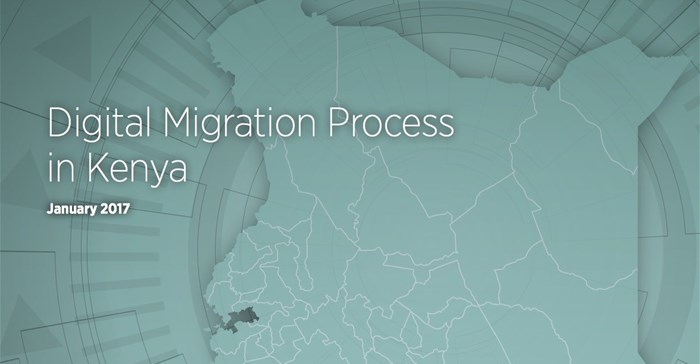GSMA launches Digital Migration Process in Kenya report

The report provides useful information and guidance to regulators and policymakers from other countries where similar migration processes are ongoing or being planned.
“For countries that want to connect more of their citizens to the enabling power of mobile technology, making the so-called Digital Dividend spectrum (700/800 MHz band) available is key to expanding coverage,” says John Giusti, chief regulatory officer, GSMA.
A hub for technology and innovation
“As one of the largest and most diverse economies in East Africa, Kenya is a hub for technology and innovation in the region,” says Giusti.
Planning for the analogue to digital television migration in Kenya began in 2006. The government had a powerful vision that the migration would not only be a vehicle to deliver improved audio-visual content to Kenyan consumers, but would also more efficiently and effectively utilise spectrum, freeing up the Digital Dividend spectrum band for mobile.
Why is the Digital Dividend important?
Digital Dividend spectrum is ideal for reaching more people with mobile broadband, as these lower-frequency bands can cover wider areas with fewer base stations than higher frequencies. This reduces deployment costs and allows operators to provide broader, more affordable coverage, especially in rural areas where connectivity can be a challenge.
But it is about more than just rural areas; Digital Dividend spectrum also delivers benefits in urban areas, providing improved indoor coverage as these frequencies can more easily penetrate buildings.
Ensuring a successful digital migration
In Kenya, as in other countries, the digital migration process required consideration and implementation of a broad range of issues including policy, the state of the broadcasting market, funding for the migration, public outreach, consumer equipment availability and the inclusion of stakeholders in the planning process.
The following are some key lessons from Kenya’s migration experience:
- It all starts with a well-planned roadmap: Governments can facilitate a smooth and successful digital migration process by establishing a well-planned migration roadmap and obtaining buy-in from stakeholders.
- Transparency enhances credibility: The roadmap should include as many details as possible regarding the repurposing of the Digital Dividend spectrum, including specific timelines for clearing the band and awarding the spectrum. In addition, the plan should specify the process the government will use to grant the spectrum to new operators.
- Industry input is needed to succeed: Governments should request and give due consideration to industry input throughout the migration process, including during the planning that precedes any actual technical changes. This will encourage commitment from stakeholders, reducing the possibility of legal challenges and delays.
- Only delay the process when absolutely necessary: In developing timelines for the process, all stakeholders should understand that adjustments will likely be necessary to address challenges and unanticipated developments. At the same time, multiple timeline adjustments create confusion and lack of certainty for consumers about the digital migration process. Such adjustments should be implemented only when objectively necessary and when their benefits outweigh the increased uncertainty.
- Choose technical standards with international backing: It is important to seek international harmonisation in order to harness the benefits that come from economies of scale. On the consumer side, the provision of set-top boxes is key, including their affordability and availability. From both the network and consumer perspectives, proper consideration should be given to the digital television deployment capacity in different regions of the country.
- Make sure to have well-run consumer awareness campaigns: Governments should work to gain cooperation from media outlets and be prepared to combat misinformation to consumers. Emphasis should be placed on media outlets with the greatest reach, which may include more traditional channels, such as newspapers and radio.
“For the benefit of citizens throughout the world, the Digital Dividend should be allocated and assigned for mobile broadband use in alignment with regionally harmonised band plans as soon as possible. A smooth and efficient digital migration is a key enabler to realising the true benefits of the Digital Dividend,” adds Giusti.
For more, download the Digital Migration Process in Kenya.













